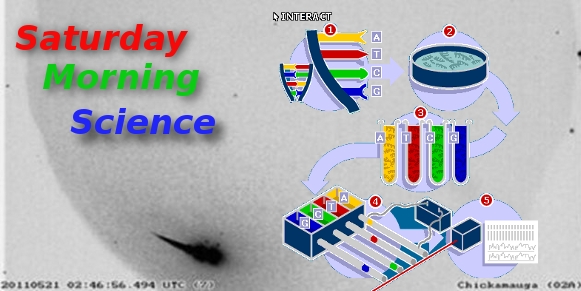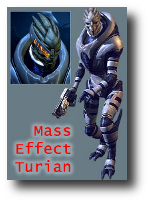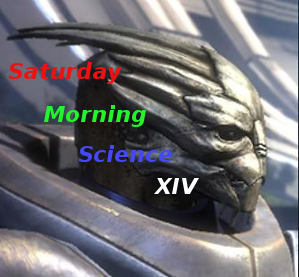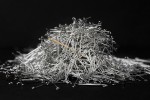Saturday Morning Science 014

Confirmations and Refutations Part 1- The deep nature of life as we know it just got weirder. One of my favourite books on biology is Jacques Monod’s magisterial Chance and Necessity. It is a step by step description of how life evolves at the microbiological level without any predefined plan, purely as a by-product of random forces. Detailed and daunting, its final image of life in the universe is bleak, uncompromising and purely existential. In his view, we are ultimately alone for the chances of life ever occurring in the first place are on a order of magnitude that dwarfs even the number of possible worlds or the time available for this to ever happen twice within the life span of the universe. Monod’s description of these processes was state-of-the-art biochemistry circa 1970 by a man who had done some of the best, basic work in the field. How could you argue with that? One criticism leveled, back in the day, was that he didn’t leave any room for quantum effects. This struck me as wishful thinking because quantum effects are just too tiny to effect the giant molecules involved in organic, biological chemistry…as everybody knows…as everybody knew.
 Spin and Twist – Researchers from the Weizmann Institute of Science in Israel and the University of Munster in Germany have uncovered an interesting property of DNA. Long, undamaged strands of DNA are sensitive to the spin of electrons. This spin effect which is an active, basic feature of quantum mechanics ( and at the heart of many of the more promising schemes for implementing quantum computers) requires some fairly exotic and involved technology to detect by clumsy giants like ourselves. However one of the most basic molecules in our bodies seems to have no problem discerning this subatomic signature with an accuracy comparable to our traditional and rather expensive detectors. One more point; this is all done in a room temperature environment. Our current electromechanical devices for observing quantum effects require working at temperatures near absolute zero. Prof. Ron Naaman of the Institute’s Chemical Physics Department figures that DNA’s ability to react to electrons based on their spin is bound to the chiral arrangement of biological molecules. For a full description of Naaman’s research a link to:DNA can detect quantum spin at Scienceblog.
Spin and Twist – Researchers from the Weizmann Institute of Science in Israel and the University of Munster in Germany have uncovered an interesting property of DNA. Long, undamaged strands of DNA are sensitive to the spin of electrons. This spin effect which is an active, basic feature of quantum mechanics ( and at the heart of many of the more promising schemes for implementing quantum computers) requires some fairly exotic and involved technology to detect by clumsy giants like ourselves. However one of the most basic molecules in our bodies seems to have no problem discerning this subatomic signature with an accuracy comparable to our traditional and rather expensive detectors. One more point; this is all done in a room temperature environment. Our current electromechanical devices for observing quantum effects require working at temperatures near absolute zero. Prof. Ron Naaman of the Institute’s Chemical Physics Department figures that DNA’s ability to react to electrons based on their spin is bound to the chiral arrangement of biological molecules. For a full description of Naaman’s research a link to:DNA can detect quantum spin at Scienceblog.
 Chirality is the quality of molecules that do not produce a symmetrical mirror image. The relationship of your left hand to your right hand is chiral. Place one over the other and they do not superimpose on each other. Life on Earth, as far as we know it, exhibits both left handedness and right handedness for specific classes of molecules. Amino acids are left handed. Sugars are right handed. Chirality dictates many of the possible configurations available for living matter by defining the fit of organic molecules to each other. Our friend pictured on the left, a Turian from the very hip, science fiction RPG, Mass Effect has a disadvantage in dealing with other races in that his amino acids are right handed. He’s at a constant risk of fatal food allergies so his opportunities for casual dining are limited.
Chirality is the quality of molecules that do not produce a symmetrical mirror image. The relationship of your left hand to your right hand is chiral. Place one over the other and they do not superimpose on each other. Life on Earth, as far as we know it, exhibits both left handedness and right handedness for specific classes of molecules. Amino acids are left handed. Sugars are right handed. Chirality dictates many of the possible configurations available for living matter by defining the fit of organic molecules to each other. Our friend pictured on the left, a Turian from the very hip, science fiction RPG, Mass Effect has a disadvantage in dealing with other races in that his amino acids are right handed. He’s at a constant risk of fatal food allergies so his opportunities for casual dining are limited.
There’s considerable debate about how profound chirality is to life. If we were ever to find chiral molecules that were reversed, like a left handed sugar, would it be fair to say that we’d found traces of alien life on Earth? Sort of…there’s just one problem. The “handedness” organic molecules might be a feature of the very nature of normal matter. It may also be the case that it wasn’t just the elements of life that formed in ancient exploding stars but the longer organic molecules as well. For a good article on this idea, check out: Supernova Explosions Offer Potential Spin on Life’s Origins. If that’s the case, Mass Effect’s Turians are in for a tough time as they would have to made out of anti-matter. Fond of military service, their active role in combat would most certainly be reduced to that of suicide bombers. Very effective suicide bombers.
Back to Monod. Do the subatomic aspects of DNA change his basic thesis? Not really, there is still no unseen hand guiding the formation of life. Or a least no need to evoke one. Does the possibility of a deeper extraterrestrial origin for organic matter invalidate his estimation of life’s rarity, its improbability? Maybe. But not until we find that other form of life, if we haven’t already.
Next Week Part II- Arsenic and Old Life.




